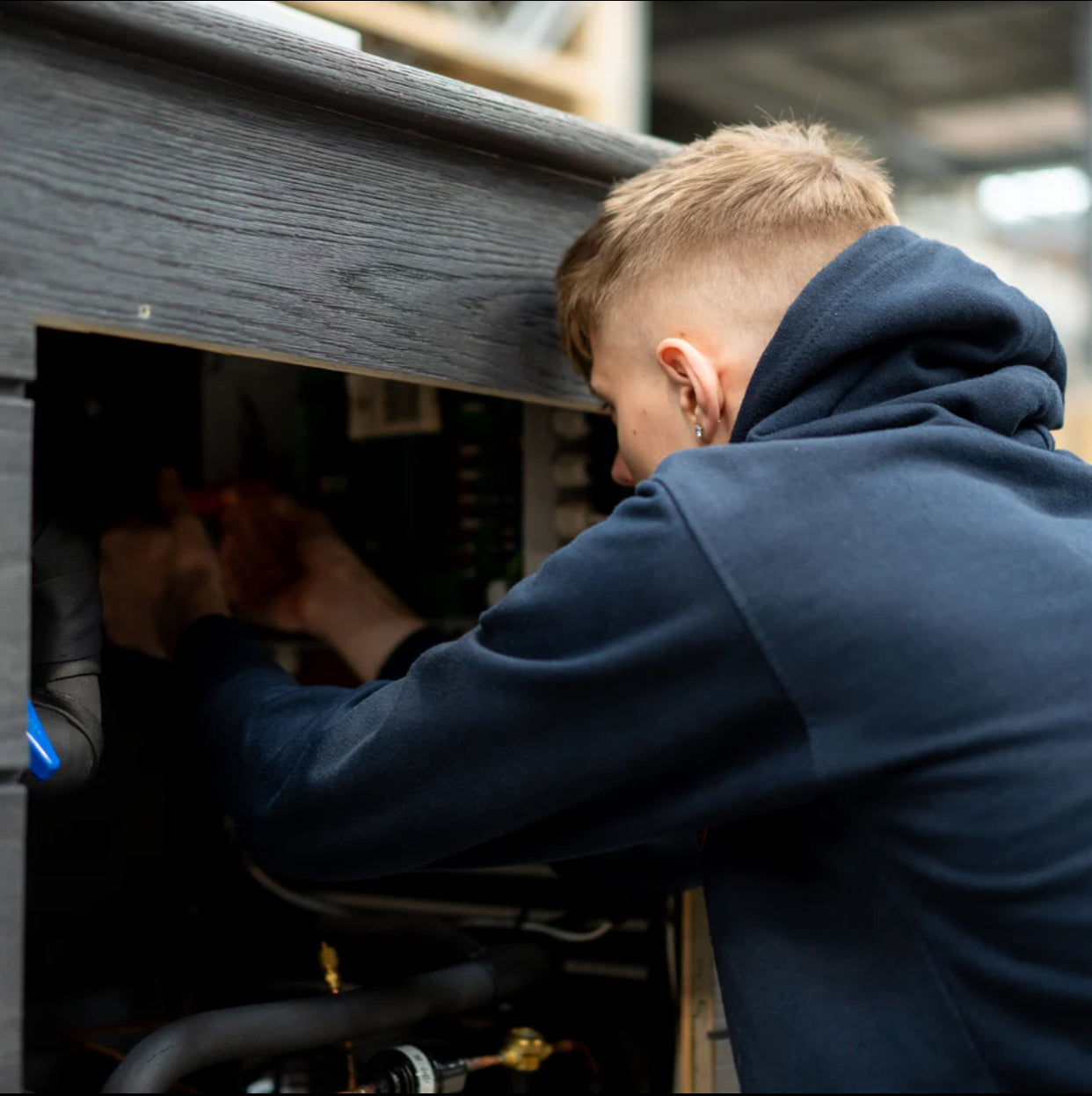Thinking of turning your garden into a spa with an Ice Bath Tub? Short answer: Yes, you can build your own Cold Plunge Tub! Whether you're after muscle recovery or just love a chill challenge, keep reading—this guide breaks down everything from benefits to blueprints.

Understanding the DIY Cold Plunge: Benefits and Feasibility
What is a DIY Cold Plunge?
Definition and Purpose
A DIY Cold Plunge is a homemade setup designed for cold water immersion, often using materials like barrels, tanks, or converted freezers.
Its main purpose is to allow regular cold therapy at home without the cost of commercial systems.
Why Consider Building Your Own? (Cost Savings, Customisation, Accessibility)
Building your own Cold Plunge Tub can be more affordable than buying pre-built systems.
You can also customise the size, materials, and features to match your preferences and available space.
It's an accessible option for those who enjoy hands-on projects or want to experiment with cold therapy.
The Benefits of Cold Plunge Therapy
Physical Recovery (Muscle Soreness, Inflammation, Circulation, Athletic Performance)
Cold water immersion helps reduce inflammation, improve circulation, and soothe sore muscles.
Athletes use Ice Baths to recover faster and support performance after intense workouts.
Even casual exercisers may notice less stiffness and quicker recovery.
Mental Well-being (Stress Relief, Mood Elevation, Cognitive Boost, Resilience)
Cold Plunge can trigger endorphin and dopamine release, lifting mood and reducing stress.
Regular plunging may build mental toughness and improve overall resilience.
It's a refreshing mental reset when you're feeling overwhelmed.
Immune System Support and Overall Health
Cold therapy might support immune response through increased circulation and reduced stress.
Some users report fewer colds and better energy levels over time.
While not a cure-all, it’s a healthy habit for overall wellness.
Planning Your DIY Cold Plunge: Considerations Before You Build
Is a DIY Cold Plunge Right for You?
Weighing Cost vs. Required Time and Effort
DIY projects require a balance of money, time, and patience.
You’ll save money versus commercial plunge systems, but the build process can be time-consuming.
Think about whether you’re up for sourcing parts, assembling, and troubleshooting.
Assessing Your DIY Skills and Commitment Level
If you're comfortable with basic tools and instructions, you’re likely capable of a basic build.
Advanced projects, like chest freezer conversions, need more confidence and care.
Be honest about your skills before you start.
Understanding Ongoing Maintenance and Potential Challenges
Homemade setups need regular maintenance to keep them clean and safe.
Leaks, electrical issues, and water quality management are common challenges.
If you enjoy tinkering and learning, the upkeep can be rewarding.
Choosing Your DIY Cold Plunge Method
Simple Entry-Level Setups (Stock Tanks, Inflatable Tubs, Barrels)
These options require minimal effort and cost.
Just add cold water and ice to a sturdy stock tank or barrel.
They’re ideal for testing the waters—literally—before committing to a bigger build.
More Advanced Builds (Chest Freezer Conversion, Custom Cooler Designs)
Converting a chest freezer or building a cold plunge from insulated materials offers better control and durability.
These builds can include filtration systems, thermostats, and better insulation.
They do, however, involve electrical and waterproofing knowledge.
Overview of Necessary Materials (Containers, Sealants, Insulation, Cooling Components)
You’ll need a solid waterproof container, such as a freezer, tank, or tub.
Sealants (like silicone), insulation panels, and cooling components (chillers, ice, or both) are essentials.
Extras like pumps, filters, and ozone generators enhance performance.
Building and Maintaining Your DIY Cold Plunge: A Step-by-Step Guide

Key Construction Steps
Preparing Your Chosen Container (Waterproofing, Sealing Techniques)
Ensure your plunge container is watertight using silicone or marine-grade sealant.
Apply insulation around the base and walls if needed.
Let everything cure properly before adding water.
Installing Your Cooling System (Chillers, Ice-Based Methods, Temperature Control)
Add ice for manual cooling or install a chiller unit for more control.
A digital thermometer helps monitor and regulate your Cold Plunge Tub temperature.
Insulation helps maintain low temps longer.
Setting Up Filtration and Sanitation Systems (Pumps, Filters, Ozone Generators, Chemicals)
Filtration keeps water clean and safe.
Use small aquarium pumps or pool filters.
Ozone generators and non-chlorine sanitisers keep water hygienic without harsh chemicals.
Ensuring Proper Drainage and Water Circulation
Install a bottom drain or siphon for easy emptying.
Water circulation helps with temperature regulation and prevents stagnation.
Make sure drainage doesn’t affect your home or garden.
Crucial Safety Measures for Your Homemade Plunge
Electrical Safety (Importance of GFCI Outlets and Proper Wiring)
Always plug equipment into GFCI outlets to reduce shock risk.
Check cords and connections regularly.
If unsure, consult an electrician.
Preventing Physical Hazards (Lid Safety, Entrapment, Structural Stability)
Use a secure lid to prevent accidents or debris from falling in.
Ensure the tub is stable and won't tip.
Avoid tight spaces or tubing that might create suction hazards.
Water Quality and Personal Usage Safety (Safe Temperatures, Duration, Listening to Your Body)
Stick to safe plunge temperatures (10–15°C for beginners).
Limit dips to 2–5 minutes at first and increase gradually.
Exit immediately if you feel dizzy, numb, or disoriented.
Ongoing Maintenance for Longevity and Hygiene
Regular Cleaning Protocols and Water Replacement
Clean your tub weekly or more often with heavy use.
Scrub surfaces with mild soap and rinse thoroughly.
Replace water at least every 1–2 weeks.
Water Treatment and Sanitation Practices
Use hydrogen peroxide or bromine to keep water clear.
Test water quality regularly with strips.
Avoid over-treating, which can damage skin or equipment.
Troubleshooting Common DIY Cold Plunge Issues
Leaks? Reapply sealant and check for cracks.
Cloudy water? Clean filters and test water balance.
If cooling fails, check insulation or add more ice.
Takeaways
-
You can build your own Cold Plunge Tub affordably and effectively.
-
Benefits range from faster recovery to improved mood and health.
-
Options vary from simple stock tanks to advanced freezer builds.
-
Prioritise safety, maintenance, and water quality.
-
Start small, learn as you go, and customise to suit your lifestyle.
With the right tools, your dream Ice Bath isn’t far away—it’s chilling in your back garden, just waiting for a dip.






